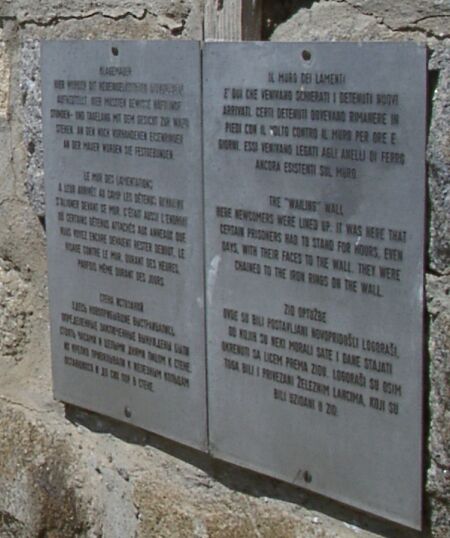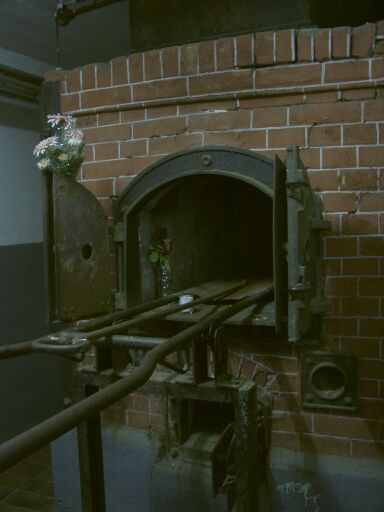
The view is beautiful from Mauthausen Concentration Camp

The view is beautiful from Mauthausen Concentration Camp
My friend, Ted Rose, who died just over a year ago, told me about "liberating" two concentration camps when he was in the army in WW II. I think one of them was Mauthausen. Ted talked about the great beauty of the countryside; everything was beautiful and beautifully maintained. Then there was the camp. It was such a scene of horror that Ted never recovered from the experience. Ted was almost 80 when he died from Parkinsons disease. A cruel death at best, but, in Ted's case, it was made crueler because his mind, near the end, was trapped in the horror of those camps. The people taking care of him thought he had been a prisoner of war because he was reliving the experience so strongly. Ted was one of the reasons I went to the camp today. Another reason was that Austria and Austrians are so beautiful, so pleasant, so good, and so religious, yet this horror is a part of their history. Moreover, it is a part that they, unlike the Germans, have not fully accepted. In the town of Mauthausen, there is almost nothing to indicate that the camp is 3 km away. The only mention I saw is on a town history display where it got two lines out of 25.

Mauthausen is at the top of a steep hill
those white towers are the crematorium smoke stacks
The ride out to the camp is beautiful, but the hill is steep. It is marked at 14% grade, but I think that is only on the last section which was 100 meters or so long. I passed lots of folks pushing their bicycles on the gentler sections below that. When I go to the camp parking area there were a number of tour buses and at least 30 bicycles already there. When I was in the camp, I realised that most of those tour buses had brought teenaged Austrian students and their teachers to tour the camp. It must be part of the school curriculum.

The grave yard at the end of the camp - thousands of victims are buried here
One of the most striking things about the camp was not that they killed people there, although they did kill tens of thousands of people, but that they tortured them first. The graveyard is next to the "infirmary" area. They didn't simply kill sick people, they made them stand, in all kinds of weather, until they dropped. If they dropped dead, great. If not, then they gassed them.


These are images from the Wailing Wall
It now has plaques for many groups of the dead
This was not just a camp for killing Jews, although Jews were the second largest group of prisoner there and, along with members of the largest group, political prisoners, more likely to be killed than other prisoners. It was a camp where Anti-Fascists, Communist, Socialist, Jehova's witnesses, Homosexuals, Jews, Gypsies, and Prisoners of War were killed. One of the plaques is for five members of the Hagana - Jews from Palestine who parachuted into occupied Europe to try to rescue other Jews. Several others are for various Christian groups that opposed the Nazis. There are about two dozen plaques each memorializing a different group. I visited this section last and, perhaps because of the graphic images in the museum section, or the crematorium and killing building that I had just been in, or because of Ted, I found it quite overwhelming. No one else was there, so I could cry without making a scene.

The English version of the Austrian Government's Statement
What was missing was how the Austrian people strongly supported the Nazis. What was missing was how the good people of Mauthausen managed not to know what was going on 3 km away from the center of their town. Many of the people in the camp were Austrians who resisted the Nazis. Why didn't more resist? I don't think the Austrians want to deal with those questions. I wish I was able to know what the school teachers who were leading those groups of kids were saying. I don't think it was "your grandparents/great grandparents did this to their fellow human beings. Don't let it happen again"

Oven for destroying bodies, with flowers and votive candle